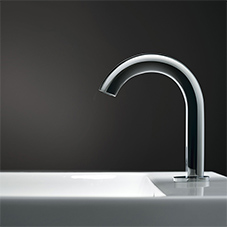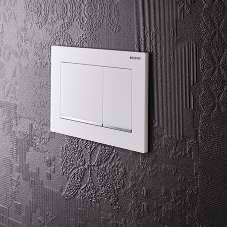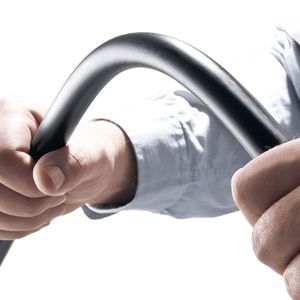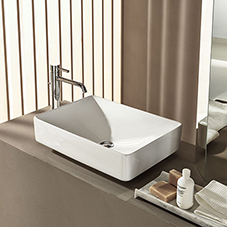As a global leader in sanitary technology, before proposing a solution to this problem, at their dedicated acoustics lab they focus on deconstructing this issue by developing an exacting understanding of how noise travels.
What is noise?
In many ways sound is subjective and what we hear depends on three things; the source, the path and the receiver. In the case of bathrooms, the source refers to the item generating the sound, for instance, flushing a toilet or turning the tap on. The majority of UK households have a close coupled toilet which means that when somebody uses the flush, otherwise known as the source – the sound transmits as vibrations to all contact surfaces which in this case would include the wall and flooring - only exasperating the original noise.
The last factor, the receiver refers to the being that receives the noise. Again, in the context of a hotel this could be a hotel guest. When a sound wave reaches our ear, we perceive its pressure as a certain loudness and its frequency as a certain pitch.
Why is acoustic design important?
People don’t want to hear waste water noise: With 90% of people agreeing that they don’t like waste water noise but often finding themselves being disturbed by such sounds it’s important to realise that this is an issue that affects most people in the majority of bathroom settings.
Acoustically-optimised buildings have the scope to enhance revenue: In a survey conducted by Geberit in 2014, 55% of participants agreed that they would happily pay more rent to reduce sanitary noise – providing developers with the scope to withdraw larger margins in return for the simple solutions of investing in acoustically designed bathroom solutions.
It enhances wellbeing: Modern society is a busy world, a non-stop, connected world that we struggle to switch off from. With sanitary noise often at its most noticeable when trying to sleep, by considering and implementing acoustically optimised bathroom solutions, sounds can be almost eliminated completely allowing for quality and undisturbed sleep ultimately benefiting factors such as energy and mood.
The solution
When considering the idea of ‘noise’ in a bathroom setting it’s important to appreciate that often multiple sound sources are acting at the same time – for instance, this could include turning the tap on after using the toilet; of which the sound waves are still travelling to the receiver whilst also creating a new source via the tap. Because of this it is important to remember that there is no singular fix to optimise the acoustic environment of a bathroom, but there are a number of adjustments you could make in your next project to reduce unwanted sanitary sound.
From acoustically- optimised pipework to decoupled pre-wall installation systems, Geberit offers a whole host of product solutions to create a quieter, wellness enhanced bathroom environment.
How to reduce sanitary sound in your next project [BLOG]
| T | (0800) 0778365 |
|---|---|
| F | (0844) 8006604 |
| E | enquiries@geberit.co.uk |
| W | Visit Geberit Sales's website |
| Geberit House, Edgehill Drive, Warwick, CV34 6NH |
Categories
Bathrooms and washrooms






